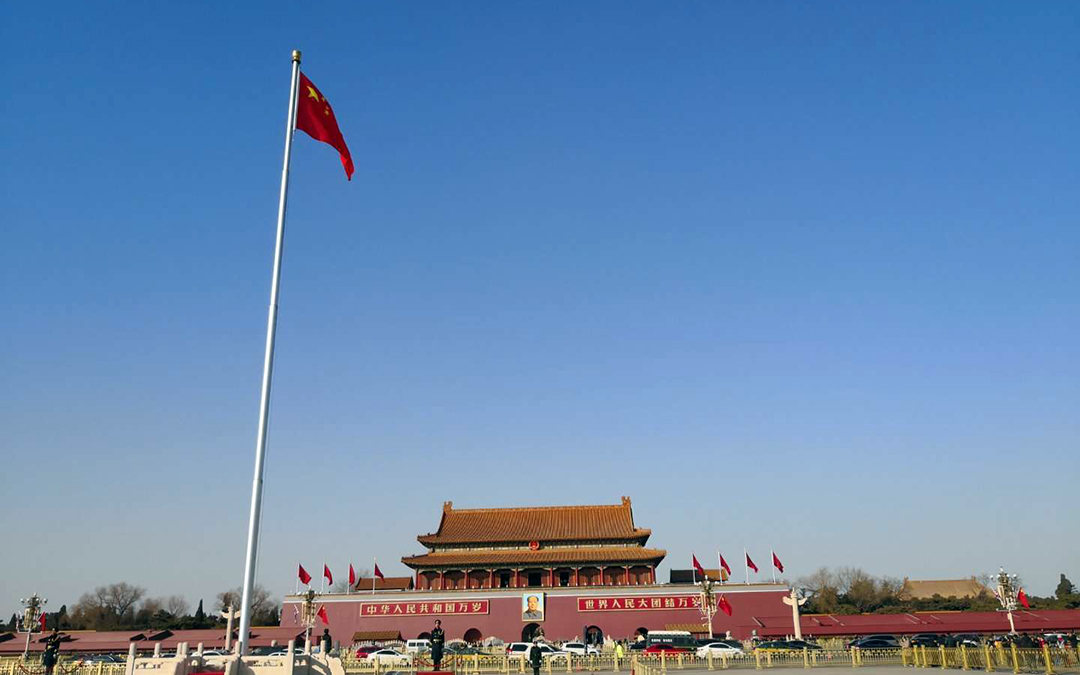Tian'anmen( the Gate of Heavenly Peace), is located in the center of Beijing. It was first built in 1417 and named Chengtianmen (the gate of heavenly succession). At the end of the Ming dynasty, it was seriously damaged by war. When it was rebuilt under the Qing in 1651, it was renamed Tiananmen, and served as the main entrance to the imperial city, the administrative and residential quarters for court officials and retainers. The southern sections of the imperial city wall still stand on both sides of the gate. the tower at the top of the gate is nine-room wide and five –room deep. according to the book of changes, the two numbers nine and five, when combined, symbolize the supreme status of a sovereign. during the Ming and Qing dynasties.
In the old days, Tian'anmen, as a part of the imperial city, was meant for important occasions. The two rows of Chaofang (antechamber), on the sides behind the main gate, were reserved for civil and military members of the government waiting for imperial audience and in front of the gate, were offices of imperial administration.
On October 1, 1949, Chairman Mao Zedong proclaimed on Tian'anmen rostrum the founding of the People's Republic of China. Since then Tian'anmen has been the symbol of new China. Chairman Mao's portrait is hung above the central entrance, flanked by two slogans: Long live the great unity of the peoples of the world”. today ,
Situated due south of Tian'anmen, the square has an area of 44 hectares( 109 acres) that can accommodate as many as one million people for public gatherings. It has witnessed may historical events in china's modern history and is a place for celebrations on such festive days as International Labor Day on may 1st and national day on October 1st.







